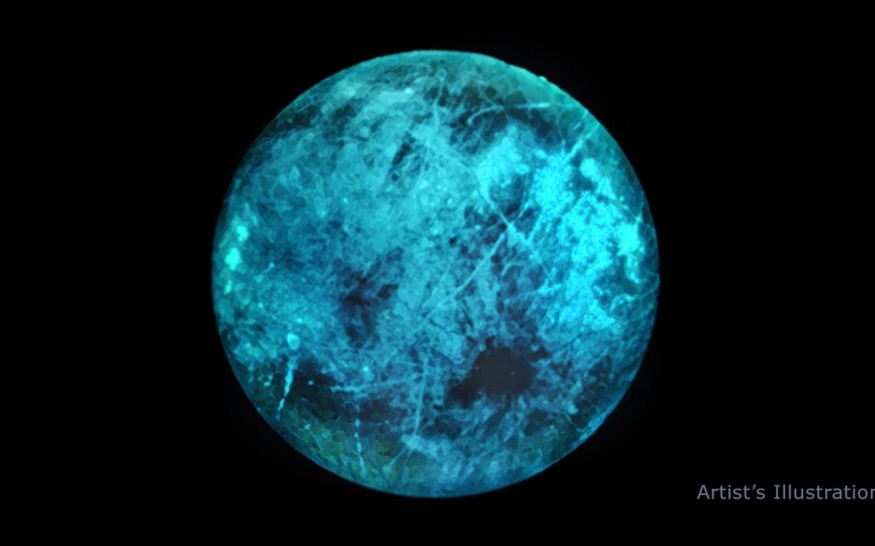Experts said small cosmic collisions have progressively molded and churned the icy surface of Jupiter's moon Europa. Importantly, the new research pinpoints shallow areas on the moon's surface where evidence of life, if it exists in Europa's deep ocean, can survive.
Europa, Jupiter's moon, has a global ocean — although one shrouded in ice — like Saturn's moons Titan and Enceladus. All three moons are regarded as strong contenders for possible life elsewhere in the solar system. Despite being well outside the solar system's habitable zone, their oceans are kept warm and liquid by powerful tidal forces imposed by their parent planets. Gizmodo said some types of life might live in the seas due to essential chemical reactions. But that remains an open topic.
Scientists may be able to send life-hunting aquatic probes to study these dark underground waters in the future. Still, evidence of this assumed life could be found on the ice above. On Europa, tectonic pressures and massive water plumes may bring salty subterranean water and important biosignatures directly to the surface. All we have to do now is deploy a lander to the surface, where it will hunt for these clues extremely carefully.

Jupiter has a Dilemma — There is a Biosignature Beneath Europa's Ice!
There is a dilemma, and it has to do with Jupiter. According to a NASA press release, charged particles from the gas giant are confined and enhanced by its magnetosphere. The charged particles in this radiation could break the bonds of molecules created by biological activity, eliminating evidence of life on the surface.
However, NASA revealed in 2018 that some biosignatures could survive to depths of 4 to 8 inches (10 to 20 cm) beneath Europa's ice. That should not be a problem for a future lander with a drill. Still, a new study published in Nature Astronomy suggests that the drill will need to be slightly longer than previously assumed. The title of the research is "Impact Gardening on Europa and Repercussions for Possible Biosignatures."
Another factor considered in the new study is collisions with minor celestial bodies. Impact gardening, a continuous process in which collisions modify the uppermost surface layer on Europa and other comparable moons, is caused by persistent impacts. The churning action that results pushes material down from the surface while also delivering material to the surface-including, hypothetically, biomolecule-rich materials. These biosignatures would be destroyed if they were exposed to Jupiter's radiation.
The researchers have presented a complete view of conditions on the moon's surface and how impacts affect them by proposing a new impact gardening model of Europa. It is also the first study to consider subsequent impacts, such as the impact of falling debris triggered by the first collision.
Impact gardening on Europa is a moonwide phenomenon, according to the research. Over tens of millions of years, the top 11.8 inches (30 cm) of the surface has churned on average. As a result, the top layer has been exposed to the terrible Jovian radiation.
Impact Gardening Might Not Affect Some Areas
This may appear to be bad news for the search for life. Still, there is a silver lining: the same study pointed out the areas where impact gardening has had less of an influence.
She's referring to juvenile craters and slope-movement-prone zones, both of which are known to exist in Europa's mid to high latitudes. Gardening has not had enough time to endanger a column of biomolecules on Europa at these locations, the scientists wrote in their paper.
This is the first time the effects of impact gardening have been considered when predicting where biomolecules might be found on Europa, as well as the first time impact gardening has been modeled to account for Europa's unique icy surface and the Outer Solar System's impactor population, according to a Planetary Science Institute release.
Study co-author and astronomer Rebecca Ghent of the Planetary Science Institute said the new research provides some significant new restrictions on where to seek if we hope to uncover signs of life.
NASA's Europa Clipper mission, which is set to launch in 2024, could benefit from the new discovery. It could have an impact on the probe's instrumentation and where the spacecraft should focus its observations. The Europa Clipper mission is unlikely to prove whether or not life exists on Europa, but it may help scientists gain a better understanding of its habitability potential and where signs of life might be found on this remarkable Jovian moon. The mission could pave the path for a future lander with a 1-foot-long drill by doing so.
Check out more news and information on Space in Science Times.
© 2026 ScienceTimes.com All rights reserved. Do not reproduce without permission. The window to the world of Science Times.










